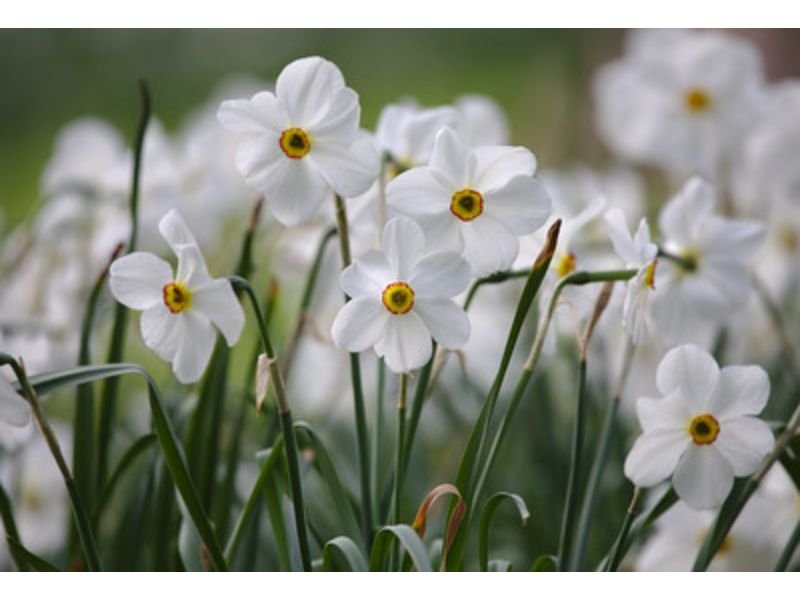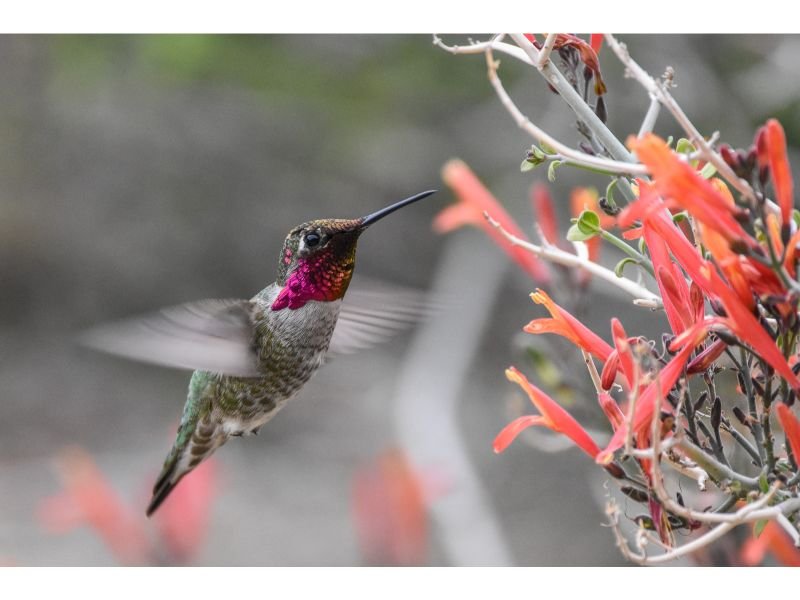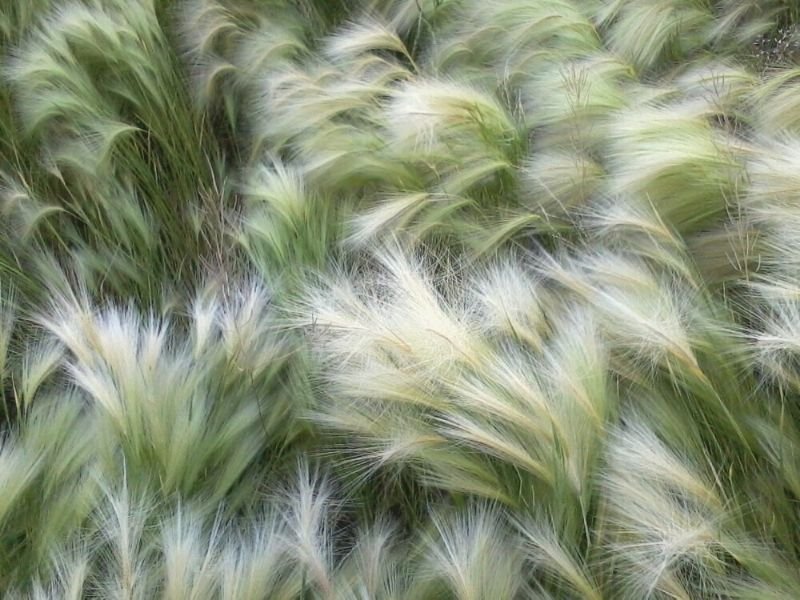Last updated on September 29th, 2023 at 07:00 am
Have you ever watched a movie called Lilo and Stitch? Do you know what flower Lilo wears on her hair? Yes, that is a hibiscus. Hibiscus is one of the most well-known flowers. And perennial flowers that look like hibiscus have also been in high demand among garden enthusiasts.
There are many options available with about 35 native species, relatively easy to find, and colorful bright shades. Some plants have a similar appearance to what we know as hibiscus, as they’re related to another species. We will guide you on how to tell those plants apart.
Some flowers that look like hibiscus are Musk mallow, Hollyhock, Coastal Mallow, Velvet-Tree Mallow, Portia Tree, Bala or Flannel Weed, Rock Rose, Pink Mallow or Rough-Leaf African Mallow, Sunset Huskmallow, Desert Cotton or Mt. Lemmon Cotton, Marshmallow Plant, and Chaparral Bush Mallow among the perennials, while Mandevilla, Rose Mallow, Cranesbill, Dinnerplate Dahlia, Cup and Saucer Vine, Four O’Clocks, Nasturtium, Morning Glory, and Canna Lily are some annuals that resemble hibiscus blooms.
Table of Contents
List of perennial flowers that look like hibiscus.
There are several perennial plants that look like hibiscus. Some are still in the same Malvaceae family and some are not. These including:
1. Musk mallow (Malva moschata)
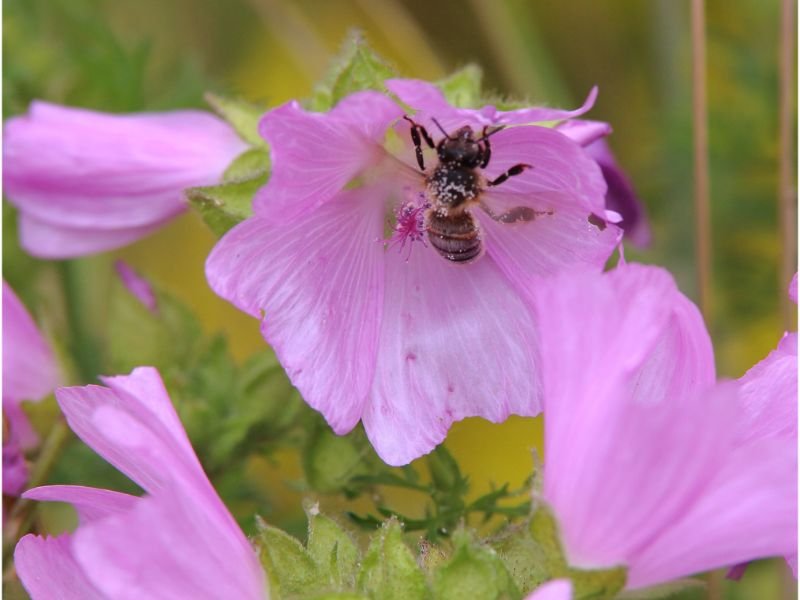
The first flowers that look like hibiscus in our list are MMusk Mallows. Musk mallow is a European and Turkey native wildflower. Often found in places like open fields and roadsides. A part of the Malvaceae family, this individual flower is decorated with bright pink or lilac purple color and blooms from fall to summer.
2. Hollyhock (Alcea rosea)
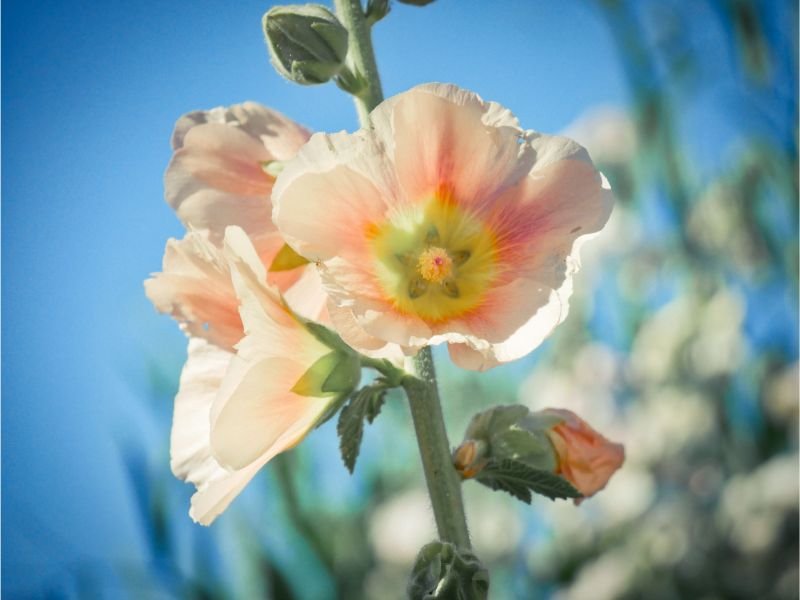
The second flower that looks like a hibiscus is Hollyhock. Hollyhocks are more cup-shaped and bloom on a tall stake with a group of more than 5 flowers. The leaves are large, shaped like a palate, and coarse-textured. They only need full sun alongside rich and well-drained soil, making them a maintenance-friendly ornamental plant. Hollyhocks can be both perennial and biennial.
3. Coastal Mallow (Kosteletzkya pentacarpos)

Hibiscus and coastal mallow look almost identical to each other. This white and pink flower has an erect yellow pistil that is appealing to pollinators and hummingbirds. Grows in areas like marshes and brackish waters, it’s no wonder this edible herb flower is resistant to salt and wet soil.
4. Velvet-Tree Mallow (Malva arborea)
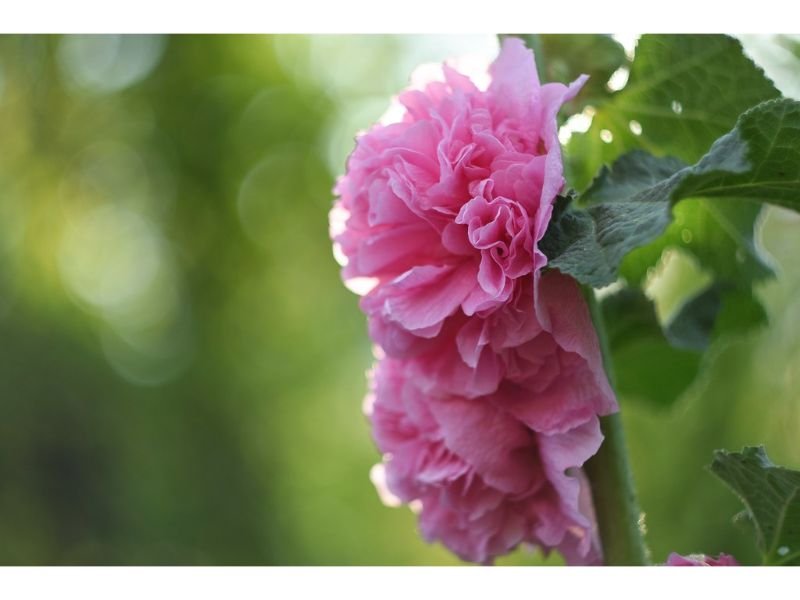
Originating from the West and South areas of Europe and the North area of Africa, velvet-tree mallow can grow up to 2 meters tall with smooth velvety leaves. Its flowers look like hibiscus, with colors of lilac, pink, or purplish petals, white pistils, and a hint of very dark purple at the center of each flower. It has 6 to 8 seeds per fruit.
5. Portia Tree (Thespesia populnea)
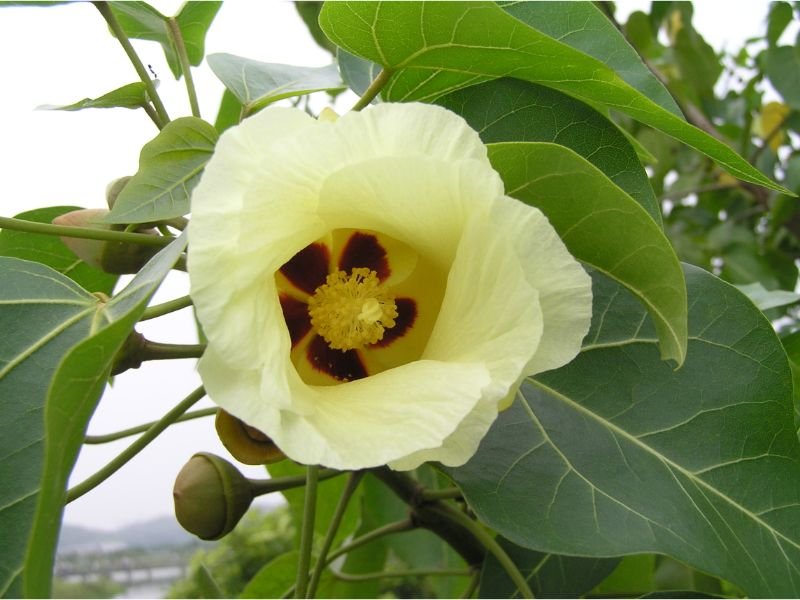
Do you know that the portia tree has bisexual flowers? It means the Portia tree’s flowers carry both male and female reproductive organs. This perennial plant’s native habitat is on the seashore and at the landslide of mangrove forests. They can grow anywhere from 10 to 20 meters tall, with brown, round, or pear-shaped fruits that are edible. The flower has beautiful yellowish-white or pale-white petals with five dots maroon center and a bright yellow pistil.
6. Bala or Flannel Weed (Sida cordifolia)
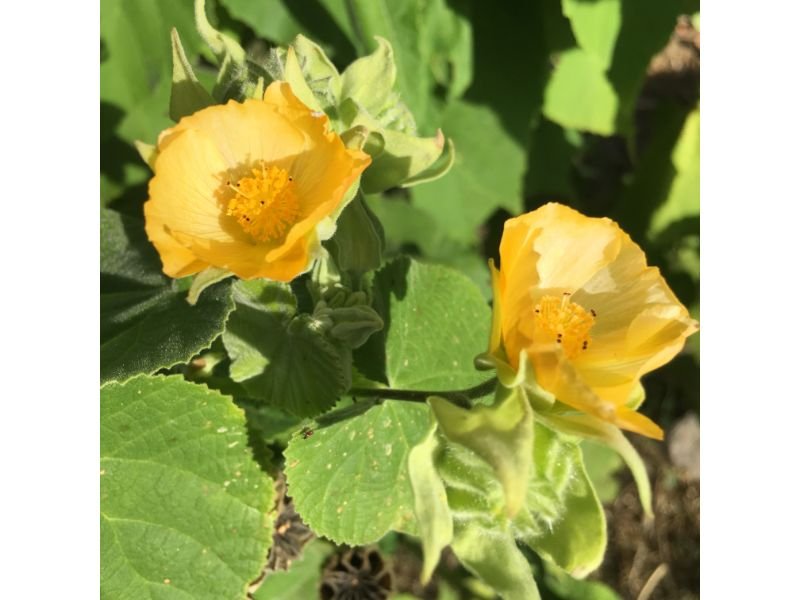
Bala is a part of a traditional medicinal plant that is native to India. They are typically short, averaging from 0.5 to 1.3 meters tall with many branches, and are woody at the base but herbaceous near the top. Flowers can be short or long-stemmed, either solitary or clustered, and are cup-shaped 5 petals. Varies in colors like shades of white, yellow, or orange with a darker center. Each flower has one yellow pistil.
7. Rock Rose (Pavonia lasiopetala)
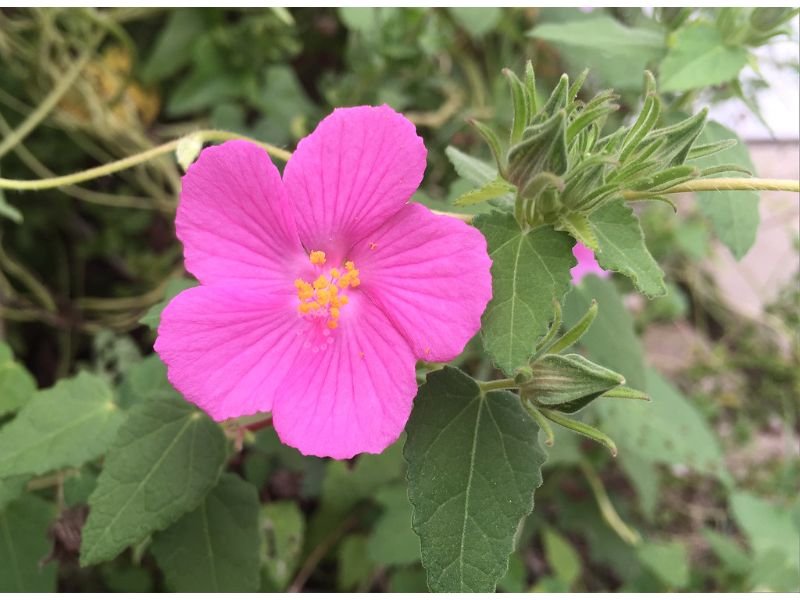
The next flowers that look like hibiscus are Rock roses. Rock rose is a popular plant throughout Texas because of its high tolerance to heat and long blooming period. This perennial looks like a hibiscus, only the flower is much smaller in size.
The flower is a deep rose pink with bright yellow pistils, and just like velvet-tree mallow, the heart-shaped leaves have a velvety texture. As a perennial, this ornamental 1.2-meter tall shrub can live anywhere from 3 to 6 years.
8. Pink Mallow or Rough-Leaf African Mallow (Anisodontea scabrosa)
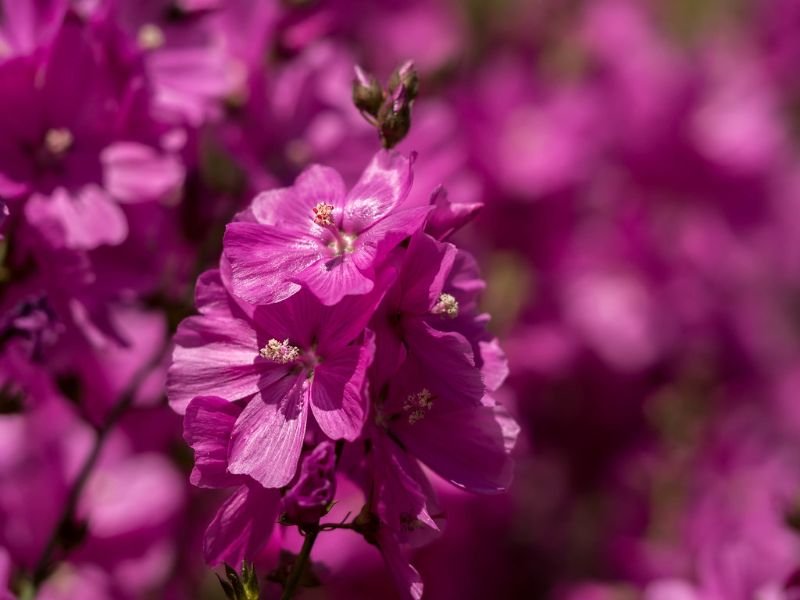
The tiny flowers of pink mallow look like miniature hibiscuses. It has bright pink petals and a dark pink center with white and bright pink pistils. They don’t need rich soil to survive.
The best place to plant pink mallow is in well-drained soil with low water content and full sun. They’re not resistant to cold and harsh winters. A Cape Provinces and Kwa-Zulu Natal native, pink mallow can get as high as 1.80 meters.
9. Sunset Huskmallow (Abelmoschus manihot)
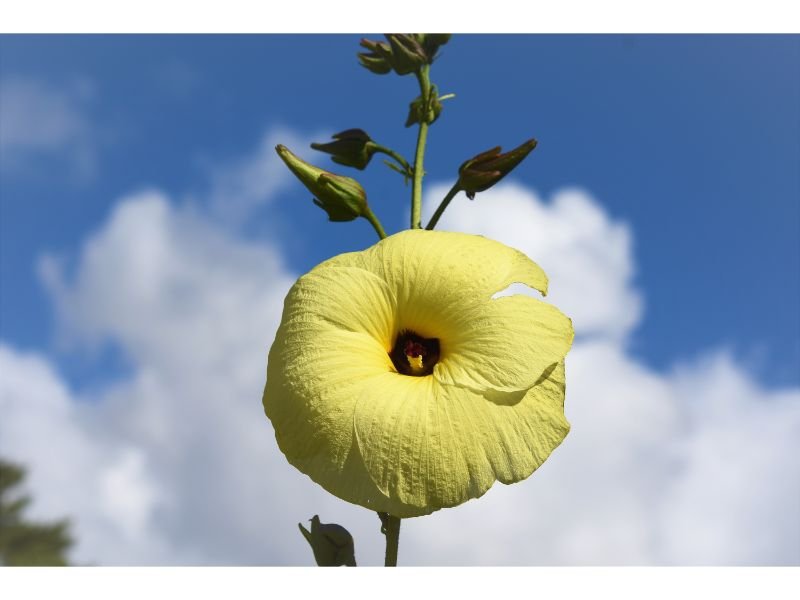
The next flower that looks like a hibiscus is the sunset huskmallow. Also known as sweet hibiscus or “aibika”, sunset huskmallow is a shallow-rooted plant with a native distribution around South-East Asia. The shape, size, and color pigmentation of sunset huskmallow varies.
The leaves may be any shade from light to dark green that goes from red to purple. Flowers are wide, bell-shaped, with a color of pale yellow and dark brown or dark maroon center and yellow pistil.
10. Desert Cotton or Mt. Lemmon Cotton (Gossypium thurberi)
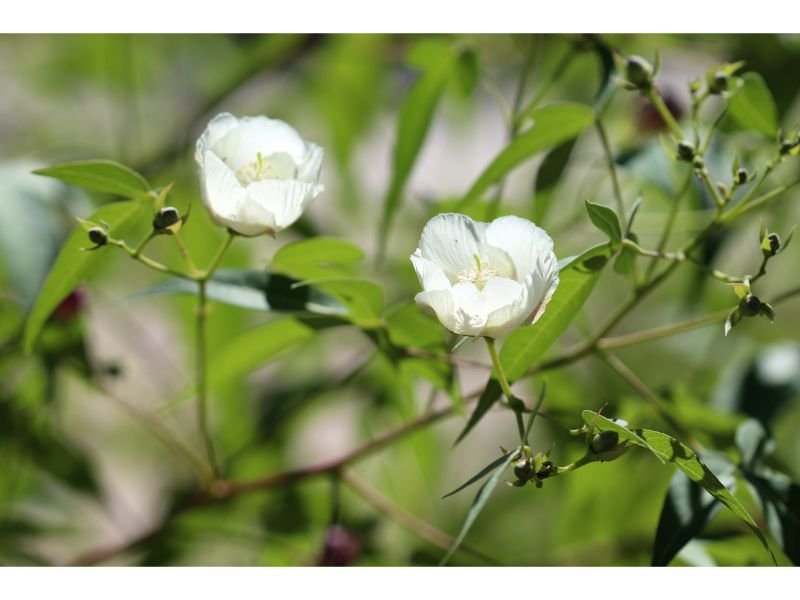
As stated in its name, desert cotton is also known as “algodoncillo” in Spanish, which means “little cotton”. This plant blooms from May to October, and typically can be found in grasslands and woodlands above 6000 feet above sea level. The flowers are pale yellow with red or pink spots at the base of each petal.
Dessert cotton is a massive plant that can grow as tall as 4 meters and its leaves turn bright red or maroon colors when it falls.
11. Marshmallow Plant (Althea officinialis)
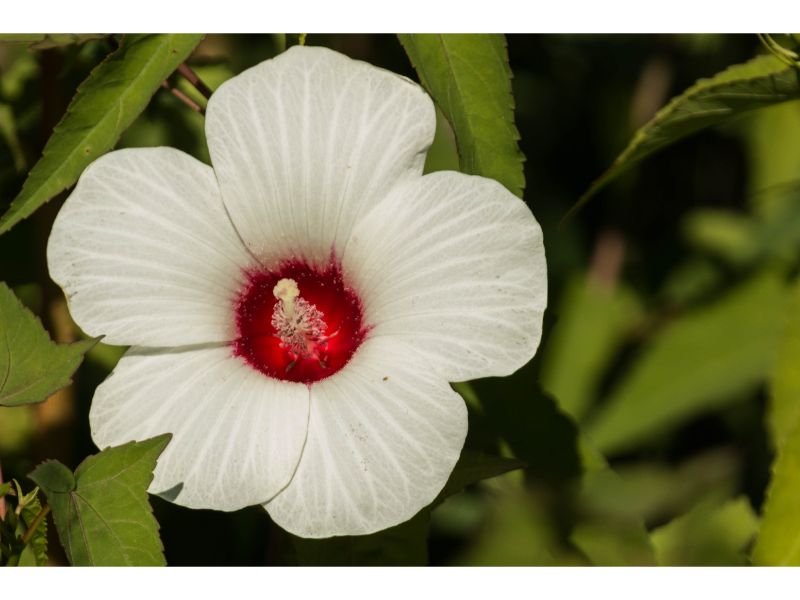
The name marshmallow that this perennial looks like hibiscus gets is not delivered from food that we all know. The term marshmallow is from the natural habitat of this plant, which is salty and brackish marshes near the sea and grassy banks.
They grow around 1.2 meters tall and 0.8 meters wide. Blooming time is from July to September. Similar to the portia tree, the marshmallow plant is also bisexual or hermaphrodite. The flowers are white with a dark green center, 5-petaled, and have dark purplish pink pistils.
12. Chaparral Bush Mallow (Malacothamnus fasciculatus)

Chaparral bush mallow is commonly grown in California, and it can grow up to 5 meters tall. Leaves are oval or rounded, around 2-11 centimeters long. Flowers are cup-shaped, white or bright purple, with orange or dark purple pistils. They bloom during spring and summer.
Sadly, this plant is an endangered species requiring federal protection. Chaparral bush mallow is very attractive to birds and pollinators.
List of Annual flowers that look like HIbiscus
While there are no annual flowers that are an exact replica of the classic hibiscus (Hibiscus spp.) bloom, there are some annuals that can resemble hibiscus in terms of their large, showy, and vibrant flowers. These annuals may not have the same woody growth habit or leaves as hibiscus, but they can provide a similar visual impact when in full bloom. Here are a few annual flowers that have hibiscus-like blooms:
13. Mandevilla (Mandevilla spp.)
Mandevilla vines produce large, trumpet-shaped flowers in various colors, including shades of pink, red, and white. The flowers have a hibiscus-like appearance and can be quite showy. Mandevilla is typically grown as an annual in colder climates but can be a perennial in warmer regions.
14. Rose Mallow (Hibiscus moscheutos)
While the classic hibiscus is a perennial, there are annual varieties of hibiscus-like flowers known as “Rose Mallow” that are grown for their large, colorful blossoms. These annual varieties typically have the same trumpet-shaped blooms in various colors.
15. Cranesbill (Geranium)
Certain varieties of annual geraniums, particularly those with larger flower heads, can resemble hibiscus blooms, although on a smaller scale. They come in various colors and are known for their showy, five-petaled flowers.
16. Dinnerplate Dahlia (Dahlia spp.)
Dahlias are not true annuals but are often grown as such in colder climates. Some dahlia varieties, particularly the dinnerplate dahlias, produce large, colorful, and intricate blooms that can be reminiscent of hibiscus flowers in terms of their size and visual impact.
17. Cup and Saucer Vine (Cobaea scandens)
This annual vine produces unique, bell-shaped flowers that come in shades of purple, pink, or white. The flowers can be quite large and showy, resembling hibiscus blooms in their shape and size.
18. Four O’Clocks (Mirabilis jalapa)
Four O’Clocks are named for their habit of opening their trumpet-shaped flowers in the late afternoon or evening. These annuals come in various colors, including red, pink, yellow, and white, and their large flowers can remind you of hibiscus when they are in full bloom.
19. Nasturtium (Tropaeolum majus)
Nasturtiums are annual plants with round, lily pad-like leaves and vibrant, spurred flowers in shades of red, orange, and yellow. While the shape of the flowers is different from hibiscus, their bold and eye-catching colors can create a similar visual impact in the garden.
20. Morning Glory (Ipomoea spp.)
Morning glory vines produce large, funnel-shaped flowers in various colors, including shades of blue, purple, pink, and red. These blooms can be quite showy and, while not identical to hibiscus, they can provide a striking display.
21. Canna Lily (Canna spp.)
Cannas are often grown as annuals in colder climates, and they are known for their large, exotic-looking blooms that come in a range of colors. Some canna lilies have flowers with a similar tropical feel to hibiscus.
These annual flowers offer a variety of colors, sizes, and shapes that can evoke the vibrant and showy nature of hibiscus blooms, adding a touch of tropical flair to your garden during the growing season.
While these annual flowers may resemble hibiscus in terms of their showy blooms, it’s important to note that hibiscus plants have a unique growth habit and distinctive foliage that sets them apart from these annual options. Nevertheless, these annuals can add a touch of hibiscus-like beauty to your garden for a single growing season.
What does a hibiscus flower look like?
Hibiscus are mainly perennials that grow best in zones 4 to 11, which means they’re not fond of cold. Perennial plants will usually continue to bloom every year and can survive for many years. In four-season countries, perennial plants will die during winter but will grow back when spring comes.
Even though categorized as perennials, hibiscus can also behave as an annual or biennial, depending on a few things like climate and growing conditions.
Hibiscus has 5 or more blooming large petals with a protruding pistil that mostly attracts animals like bees and butterflies. These trumpet-shaped flowers grow individually and have many branches.
The shiny green, wide oval-shaped leaves are rather wide and thin, while the edges of the leaves are jagged roughly. Colors vary from white, yellow, orange, and red to pink, but there are flowers that look like hibiscus with more prominent colors like lilacs.
Several varieties do have thorns, like Monarch rosemallow, but most hibiscus do not grow with one. The root system is a taproot, where there’s only one root that grows deep into the soil.
What can you do with plants that look like hibiscus?
Apart from its gorgeous flowers, almost all perennial looks like hibiscus bear many benefits for both humans and animals. We can start with Musk Mallow. The leaves and flowers are non-irritant, which makes them usually used to treat bruises, insect bites, and inflammations. If consumed internally, musk mallow also can be used to treat digestive/urinary inflammation.
The coastal mallow has a long history of use among indigenous tribes, who used this plant to cure exhaustion and menstrual cramping. Its beautiful flowers are also edible and can be used as garnishes. As a notable medical plant, research has shown that the whole ball or flannel weed plant contains chemicals like asparagine and alkaloids such as ephedrine, vaccine, and hypaphorine, and it’s also a part of ayurvedic medicine.
Last but not least, all parts of marshmallow plants have been used to treat various diseases such as coughs, skin irritation, and digestive problems. It’s also available in many forms, from powder, capsule, tea, and syrup.
The root extract provides moisturizing for skin cell proliferation, making it an effective treatment for skin inflammation and irritation. It also helps protect human skin from UVA-caused damage.
Although these flowers are believed to be beneficial to treat certain illnesses, we still need more scientific evidence to support this claim. So it’s better to consult with your doctor first before taking any of these plants as a medicine.
10 Fun facts about hibiscus and perennial looks like hibiscus.

1. Hibiscus is a national flower of Malaysia and Haiti.
2. Hibiscus has been long used as a medical plant in some countries in Asia.
3. Polynesian women use a hibiscus flower in their hair, and it’s not only decoration. If they wore it on their right ear, it meant that they were looking for a partner. If they wore it on their left ear, it meant that they were married.
4. The hollyhock symbolizes fruitfulness.
5. Bala or flannel weed contains amphetamine-like stimulants.
6. Hibiscus flowers are also hermaphrodites.
7. Marshmallow plants are often associated with beauty and fertility.
8. Marshmallow plants’ flowers are used to decorate graves and honor the dead.
9. Bala or flannel weed is associated with Parvathi, the ancient Hindu Goddess of Beauty and Grace.
10. Mallows, just like roses, is the symbol of romance and passion.
Conclusion.
To wind up, flowers that look like hibiscus can be a good alternative if you are not able to plant a real hibiscus. These aesthetically pleasing flowers provide you with many benefits, generally easy to maintain, non-toxic, and convenient for our planet. If you like this article, don’t forget to comment and share. Happy Gardening!

New author in the hood. Loves gardening and flowers are my spirit animals (yes I know they are not animals but I insist). I will be covering most of the flowers’ topics here and occasionally random though as well.

